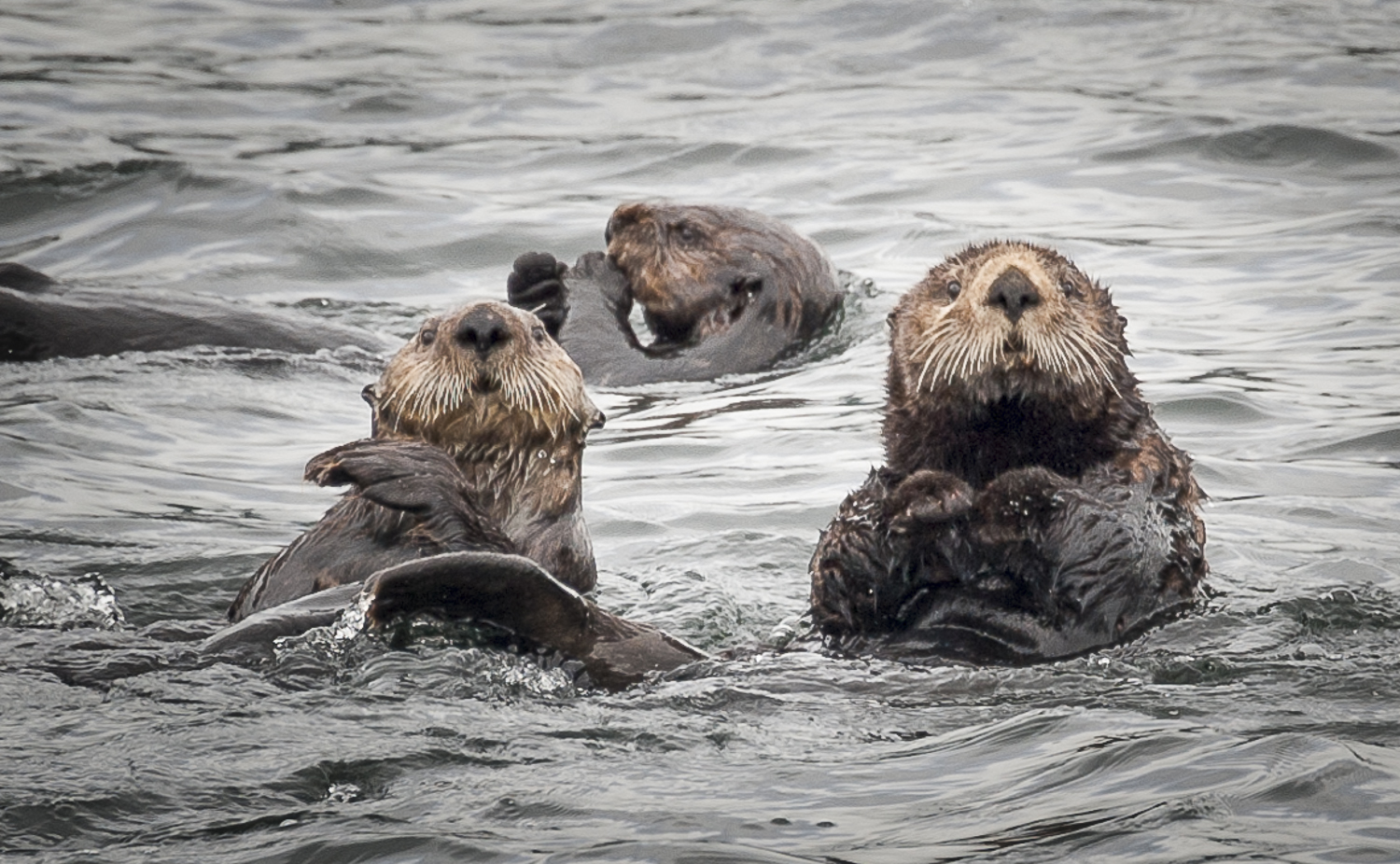Scow Bay, Lay Day
/Today we had set aside to explore this area. The clouds had departed in the darkness of morning but by sunrise they were back, although at around 1000 feet, so no fog.
We took our time getting moving and I made pancakes and bacon for a late breakfast. Around 11:30 we launched the dinghy. Our first stop was at the sailboat that came in last night. Diva was out of Whidbey Island and manned by Jeff and Marin. They said they had a rough ride yesterday around Cape Cook as the Southeasterlies came up causing confused and rough seas. They were about to raise their anchor and continue south to get water and fuel.
We pointed the dinghy toward the inner basin at the head of the bay. It was drying earlier, but with high tide approaching and the water plus 7 to 9 feet, we managed to go all the way to the end and circumnavigate both the small and large island. The path around the large island shows only green on our charts, but we saw no lower than three feet. It was a good exploration…and we enjoyed the company of a few otters.
As we exited the back cove, Karen spotted the sea otter she had been playing hide and seek with since yesterday, fondly called “The Log” as he would just zone out and drift around the anchorage. We approached very slowly in the dinghy and he seemed content to just watch us. A few feet at a time we moved closer, watching his body language to make certain we did not scare him.
What a ham!
He was very gracious and allowed us to approach as close as 10 feet. He never deviated from his grooming chores. After about 10 minutes, lots of pictures, and a video, we motored on our way, the otter never moving from his spot or stopping his grooming. That was a very special otter, he must have sensed we meant him no harm and only wanted a close encounter.
West Nook and South Nook, also off Gay Passage, were the next two destinations for our explorations. These anchorages held little appeal because they seemed very open and the shore lines were littered with driftwood. With Scow Bay just around the corner, I would always anchor here.
About 15 minutes after had settled back aboard we saw lightning and heard thunder. In the nine years we have been cruising the Pacific Northwest, this was a first. It produced some rain and then was gone as quickly has it had come.
My plan for the afternoon was to bake bread. I always start with about three store bought loaves on our trips, but they take up room in the freezer and are never as good as fresh baked.
Just as I was beginning to prepare dinner, I heard a loud thunk and a scream. Karen had slipped down the forward stairs as she was putting away my baking supplies. She had both hands full of supplies, and was only wearing only socks, a no-no in a boat. The teak, even the stairs which have anti-slip treads, can be very slippery.
I went down to check on her and she was sitting on the floor trying to catch her breath. I checked her over and she had taken the brunt of the fall on her back ribs and right arm. Her hip was going to be bruised, but the ribs were our biggest concern.
We put ice on the areas that hurt the most, and put her on the settee to recover. In addition to some wine, a healthy dose of Aleve came her way in hopes of keeping the swelling and pain down. As she lay tending to her wounds, I made dinner and we finished the evening with another episode of LOST, season 3.
Three more Advil and I tucked Karen into bed in hopes that she would be comfortable enough to sleep.
I think she’ll be OK, but I’ll continue to monitor the pain to see if it gets better or worse.


























